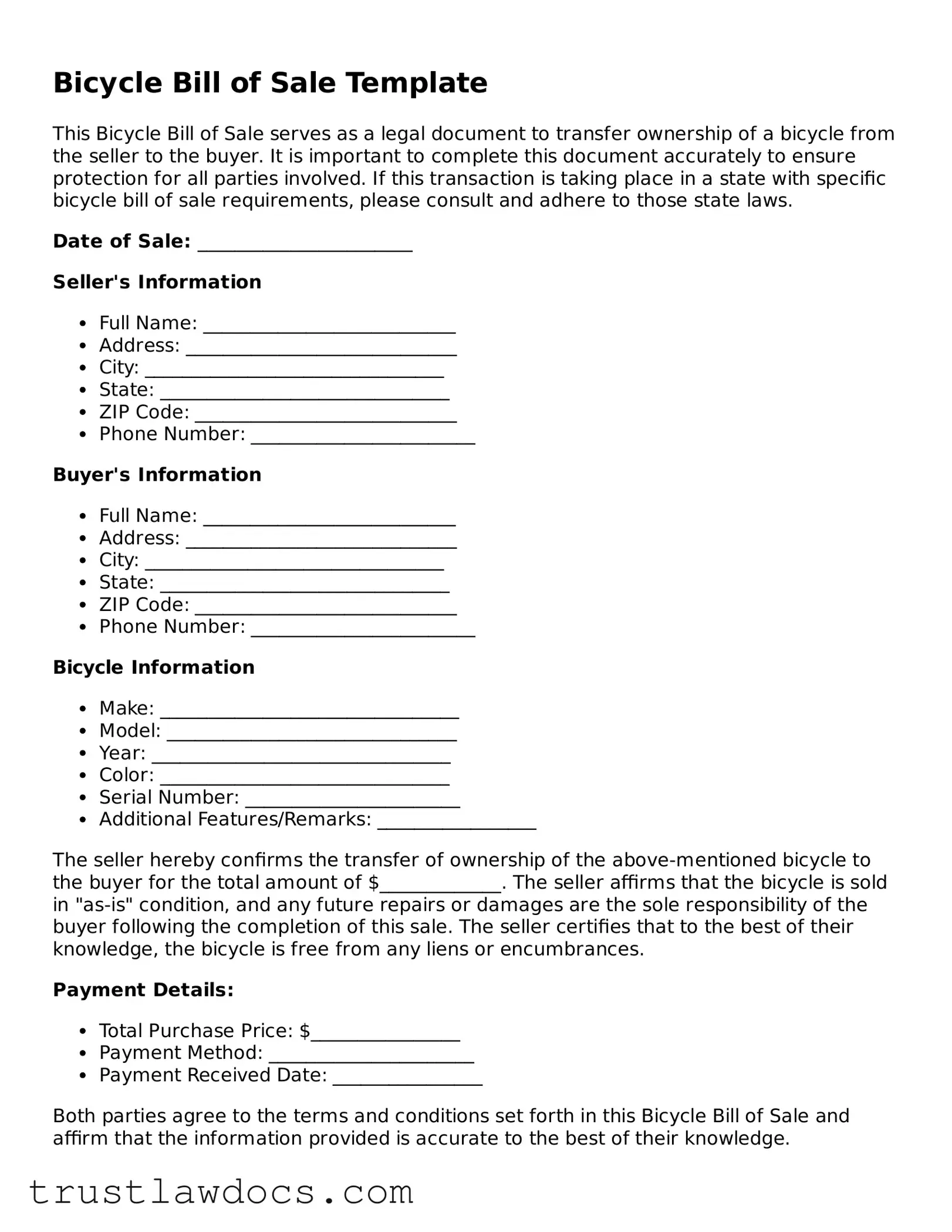A Motorcycle Bill of Sale form serves a similar purpose to the Bicycle Bill of Sale, as it is used to document the transaction between a seller and buyer for the sale of a motorcycle. This form outlines the details of the sale, including the make, model, year, and VIN of the motorcycle, the sale price, and the names and signatures of the seller and the buyer. The primary aim is to provide legal proof of the transfer of ownership, mirroring the intent behind the Bicycle Bill of Sale.
Additionally, an Automobile Bill of Sale form parallels the Bicycle Bill of Sale, focusing instead on the transaction involving a car. It records critical information about the sale, like the vehicle’s make, model, VIN, purchase price, and the particulars of the buyer and seller. This form acts as a binding agreement and a receipt for the transaction, verifying the change in vehicle ownership, just as the Bicycle Bill of Sale confirms ownership transfer of a bicycle.
The Boat Bill of Sale form is another document that shares similarities with the Bicycle Bill of Sale, as it is created to finalize the sale of a boat. It contains specific details related to the boat sale, including the hull identification number (HIN), make, model, year, and the sale’s financial terms. Both forms serve as definitive proof of the sale and transfer of ownership from the seller to the buyer.
When selling or transferring firearms, the Firearm Bill of Sale form is used, resembling the Bicycle Bill of Sale. This form documents the crucial details of the firearm’s sale, such as the make, model, serial number, and the buyer and seller’s identities. It serves an important role in ensuring a legal transfer of ownership, highlighting the necessity of a formal record similar to what is needed for bicycle sales.
The General Bill of Sale form is a more versatile document, applicable for various types of personal property beyond bicycles, like electronics, furniture, and more. Like the Bicycle Bill of Sale, it details the transaction between the buyer and seller, including the item's description, sale price, and party information. This form provides a legal acknowledgment of the sale and transfer of property rights.
For transactions involving pets or animals, the Animal Bill of Sale is used, which is akin to the Bicycle Bill of Sale in structure and function. This document includes specifics such as the animal’s breed, age, health information, and any other relevant details, alongside the sale conditions. Guaranteeing the rightful transfer of ownership from the seller to the buyer, it ensures the transaction is recorded for legal purposes.
An Equipment Bill of Sale form is employed during the sale of machinery or equipment, echoing the purpose of the Bicycle Bill of Sale. It captures essential information about the equipment sold, including a description, serial number (if applicable), purchase price, and the buyer and seller’s information. This form acts as a formal acknowledgment of the transaction and changes in ownership, providing legal protection to both parties involved.
Lastly, the Aircraft Bill of Sale form documents the sale of an airplane in a manner akin to the Bicycle Bill of Sale, despite the difference in asset type. It includes important details about the aircraft, such as the make, model, year, and registration number, sale price, and the particulars of the transaction parties. This document ensures a legally recognized transfer of ownership, affirming the transaction in a legally binding format.
